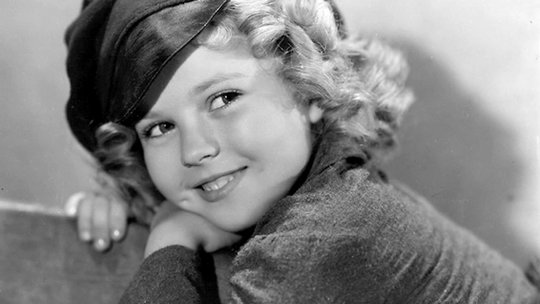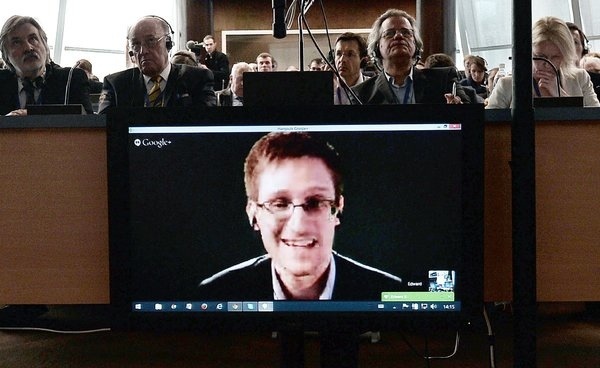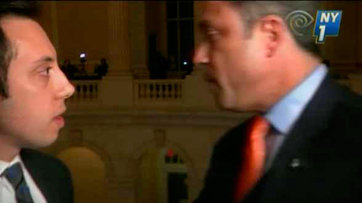
By ALJEAN HARMETZFEB. 11, 2014
Shirley Temple Black, who as a dimpled, precocious and determined little girl in the 1930s sang and tap-danced her way to a height of Hollywood stardom and worldwide fame that no other child has reached, died on Monday night at her home in Woodside, Calif. She was 85.
Her publicist, Cheryl Kagan, confirmed her death.
Mrs. Black returned to the spotlight in the 1960s in the surprising new role of diplomat, but in the popular imagination she would always be America’s darling of the Depression years, when in 23 motion pictures her sparkling personality and sunny optimism lifted spirits and made her famous. From 1935 to 1939 she was the most popular movie star in America, with Clark Gable a distant second. She received more mail than Greta Garbo and was photographed more often than President Franklin D. Roosevelt.The little girl with 56 perfect blond ringlets and an air of relentless determination was so assured that the usually unflappable Adolphe Menjou, her co-star in her first big hit, “Little Miss Marker,” described her as “an Ethel Barrymore at 6” and said she was “making a stooge out of me.”When she turned from a magical child into a teenager, audience interest slackened, and she retired from the screen at 22. But instead of retreating into nostalgia, she created a successful second career for herself.
After marrying Charles Alden Black in 1950, she became a prominent Republican fund-raiser. She was appointed a delegate to the United Nations General Assembly by President Richard M. Nixon in 1969. She went on to win wide respect as the United States ambassador to Ghana from 1974 to 1976, was President Gerald R. Ford’s chief of protocol in 1976 and 1977, and became President George H. W. Bush’s ambassador to what was then Czechoslovakia in 1989, serving there during the fall of Communism in Eastern Europe.
After winning an honorary Academy Award at the age of 6 and earning $3 million before puberty, Shirley Temple grew up to be a level-headed adult. At a time when operations for cancer were shrouded in secrecy, Mrs. Black held a news conference in her hospital room after her mastectomy to discuss her experience and to urge women discovering breast lumps not to “sit home and be afraid.” She is widely credited with helping to make it acceptable to talk about breast cancer.
Shirley Jane Temple was born in Santa Monica, Calif., on April 23, 1928. From the beginning, she and her mother, Gertrude, were a team (“I was absolutely bathed in love,” she remembered); her movie career was their joint invention. Her success was a result of both her own charm and her mother’s persistence.
In “Child Star,” her 1988 autobiography, Mrs. Black said her mother had made a “calculated decision” to turn her only daughter into a professional dancer. At a fee of 50 cents a week, Mrs. Temple enrolled 3-year-old Shirley in Mrs. Meglin’s Dance Studio.
In 1932, Shirley was spotted by an agent from Educational Pictures and chosen to appear in “Baby Burlesks,” a series of sexually suggestive one-reel shorts in which children played all the roles. The 4- and 5-year-old children wore fancy adult costumes that ended at the waist. Below the waist, they wore diapers with oversize safety pins. In these heavy-handed parodies of well-known films like “The Front Page” (“The Runt Page”) and “What Price Glory” (“War Babies”), Shirley imitated Marlene Dietrich, Mae West and — wearing an off-the-shoulder blouse and satin garter as a hard-boiled French bar girl in “War Babies” — Dolores del Río.
When any of the two dozen children in “Baby Burlesks” misbehaved, they were locked in a windowless sound box with only a block of ice on which to sit. “So far as I can tell, the black box did no lasting damage to my psyche,” Mrs. Black wrote in “Child Star.” “Its lesson of life, however, was profound and unforgettable. Time is money. Wasted time means wasted money means trouble.”
“Baby Burlesks” was followed by five two-reel comedies and a year of casting calls and bit-part auditions that which garnered young Shirley half a dozen small roles. By Thanksgiving 1933 she was growing older. She was 5 ½, and in the previous two years she had earned a total of $702.50. Her mother did the sensible thing: she shaved a year off her daughter’s age. Shirley would be shocked to discover, at a party for her 12th birthday in April 1941, that she was actually 13.
Her career began in earnest in 1934, when she was picked to play James Dunn’s daughter in the Fox fantasy “Stand Up and Cheer,” one of many films made during the Depression in which music chases away unhappy reality. She was signed to a two-week contract at $150 a week and told to provide her own tap shoes.
Within an hour of completing her song-and-dance number “Baby, Take a Bow,” she was formally placed under contract to Fox for a year at $150 a week. The studio had an option for seven more years and would pay Gertrude Temple an additional $25 each week to take care of her daughter.
On ‘The Good Ship Lollipop’
In its review of “Stand Up and Cheer” (1934), Variety called Shirley Temple a “surefire potential kidlet star.” She made eight movies in 1934 and moved from potential to full star in February, when Fox lent her to Paramount for “Little Miss Marker,” based on a Damon Runyon story.
Playing a child left with a bookie (Mr. Menjou) as a marker for her father’s gambling debts, Shirley reforms a gang of gamblers, bookies and horse dopers. She would play a similarly wise and maternal miniature adult, dominating the adults around her and solving their problems with unbounded optimism and common sense, in most of her films.
She brought peace to a British regiment fighting rebels in India in “Wee Willie Winkie” (1937) and to white men and Indians in “Susannah of the Mounties” (1939). She was frequently cast as an orphan, the better to show adults how to cope with adversity: her father committed suicide in “Little Miss Marker”; her aviator father crashed and her mother was killed by a car in “Bright Eyes” (1934); she was the sole survivor of a shipwreck in “Captain January” (1936).
“People in the Depression wanted something to cheer them up, and they fell in love with a dog, Rin Tin Tin, and a little girl,” Mrs. Black often said in appraising her success.
It is no surprise that Shirley Temple dolls were the best-selling dolls of the decade (and are valuable collectibles now). In many of her films she was a living doll, adored by entire groups of men: aviators in “Bright Eyes,” a Yankee regiment in “The Little Colonel” (1935).
No Shirley Temple movie was complete without a song — most famously “On the Good Ship Lollipop” and “Animal Crackers in My Soup” — and a tap dance, with partners including George Murphy, Jack Haley and Buddy Ebsen. But her most successful partnership was with the legendary African-American entertainer Bill (Bojangles) Robinson. She may have been the first white actress allowed to hold hands affectionately with a black man on screen, and her staircase dance with Mr. Robinson in “The Little Colonel,” the first of four movies they made together, retains its magic almost 80 years later.
Not everyone was a Shirley Temple fan. The novelist Graham Greene, who was also a film critic, was sued by 20th Century Fox for his review of “Wee Willie Winkie” in the magazine Night and Day, which he edited. In the review, he questioned whether she was a midget and wrote of her “well-shaped and desirable little body” being served up to middle-aged male admirers.
After the failure of “The Blue Bird” (1940), a film version of the Maeterlinck fantasy that Fox had expected to be the bonanza MGM’s “The Wizard of Oz” had been a year earlier, the studio dropped the 12-year-old actress’s contract. Even before the movie was released, her mother had decided it was time for Shirley, who had been educated in a schoolroom at Fox, to go to a real school.
She entered the private Westlake School for Girls in seventh grade, with little idea of how to cope. She had sat on 200 famous laps and found J. Edgar Hoover’s the most comfortable. Amelia Earhart had shared chewing gum with her. She had conversed with Eleanor Roosevelt. The Brown Derby restaurant in Hollywood had created the Shirley Temple — a nonalcoholic drink of lemon-lime soda, grenadine and a maraschino cherry — in her honor. (She didn’t care for it.) But her playmates had been few and carefully chosen.
At Westlake, after months of being given the cold shoulder, she decided she might as well be herself. She eventually spent a happy five years there.
What Fox had dropped, MGM picked up eight months later. But the little girl was now entering adolescence. On her first visit to MGM, Mrs. Black wrote in her autobiography, the producer Arthur Freed unzipped his trousers and exposed himself to her. Being innocent of male anatomy, she responded by giggling, and he threw her out of his office.
Curls and Girlish Magic Fade
She made “Kathleen” (1941) for MGM and “Miss Annie Rooney” (1942) for United Artists; played supporting roles for David O. Selznick in two 1944 films, “Since You Went Away” and “I’ll Be Seeing You”; and made “Kiss and Tell” on loan to Columbia in 1945.
But her golden hair had turned brown, and, as the film historian David Thomson observed, she had become “an unremarkable teenager.” After nearly four dozen films, the public had lost interest.
Recent Comments
Knorrfleat Wringbladt
36 minutes ago
Bravo! A life superbly lived! May any of us do half as well?
Judy c
36 minutes ago
God Bless you, sweet, sweet Shirley. You always made me smile.
Timothy M Vaslet
37 minutes ago
I was born in 1960 but remember her well;am blown away to know the tough minded intelligent roles she acted in is truly who she was and will…
By then she was a strong-willed, chain-smoking 17-year-old. Determined to be the first in her Westlake class to become engaged, she had accepted a ring from a 24-year-old Army Air Corps sergeant, John Agar Jr., a few days before her 17th birthday. They were married on Sept. 19, 1945.
Unable to handle being Mr. Shirley Temple, Mr. Agar began drinking excessively. While his wife was appearing in “The Bachelor and the Bobby Soxer” with Cary Grant and Myrna Loy and “That Hagen Girl” with Ronald Reagan, Mr. Agar began an acting career of his own. He appeared in several low-budget movies, in support of John Wayne in a few westerns and war films, and on television. But he failed to achieve anything close to her success.
They were divorced in December 1949, a year after the birth of their daughter, Linda Susan. Less than 60 days after her divorce, Miss Temple, 21, met and became engaged to Mr. Black, then the 30-year-old assistant to the president of the Hawaiian Pineapple Company, who claimed he had never seen a Shirley Temple movie. They were betrothed after a 12-day courtship. Their marriage lasted almost 55 years, until his death in 2005.
Mr. Black, who was dropped from the San Francisco Social Register for marrying an actress, told a reporter in 1988: “Over 38 years I have participated in her life 24 hours a day through thick and thin, traumatic situations, exultant situations, and I feel she has only one personality. She would be catastrophic for the psychiatric profession. You can wake her up in the middle of the night and she has the same personality everybody knows. What everybody has seen for 60 years is the bedrock.”
Shirley Temple had left the movies for good by Dec. 6, 1950, when she married Mr. Black. A son, Charles Jr., was born in 1952; a daughter, Lori, in 1954. They survive her, as does her daughter, Linda Susan.
During the Korean War, Mrs. Black followed her husband to Washington, where he was stationed at the Pentagon as a Navy lieutenant commander. In later years he would follow her to her diplomatic postings.
Late in the 1950s, with her old movies being shown on television all over America, she briefly returned to show business. From 1958 to 1961 she was the host and an occasional performer on the television series “Shirley Temple’s Storybook” (also known as “The Shirley Temple Show”), an anthology of fairy-tale adaptations.
Watch Now: New York Fashion Week | Elements
Watch: Clothes and Character | “American Hustle”
Watch: Vows | One more member for the band
By the early 1960s she was president of the Multiple Sclerosis Society and co-founder of the International Federation of Multiple Sclerosis Societies, raising funds to fight the disease that struck her brother George. She was representing the federation in Prague on Aug. 21, 1968, when Soviet tanks rolled in and brought a premature end to Alexander Dubcek’s effort to remodel the Communist system.For many years the Black family lived in the San Francisco area, where Mrs. Black was active in civic and community affairs. She worked particularly hard for the development of the San Francisco International Film Festival, but quit the festival’s executive committee in 1966 to protest a decision to show the Swedish film “Night Games,” which she called “pornography for profit.”
A Conservative Republican
Mrs. Black had become interested in politics when she lived in Washington. In 1967 she ran for Congress to fill a seat left vacant by the death of the Republican J. Arthur Younger. She hoped to emulate the California political successes of George Murphy, her dancing partner in “Little Miss Broadway,” who had become a United States senator, and Mr. Reagan, who had become governor.
A backer of the Vietnam War, she lost to a more moderate Republican, Pete McCloskey, in the suburban 11th Congressional District south of San Francisco. It probably did not help that the bands kept playing “On the Good Ship Lollipop” at her campaign stops.
But Mrs. Black pressed on with her goal of a career in public service. In 1969, President Nixon appointed her to the five-member United States delegation to the 24th session of the United Nations General Assembly. She acquitted herself well by all accounts, speaking out about the problems of the aged, the plight of refugees and, especially, environmental problems.
When she was appointed ambassador to Ghana in 1974, some career diplomats were outraged, but State Department officials later conceded that her performance was outstanding.
Among her duties as the government’s chief of protocol was heading a training program for new envoys. She flashed her wit in describing it: “We teach them how to get used to being called Ambassador and having Marines saluting. Then, on Day 3, we tell them what to do if they’re taken hostage.”
When she arrived in Prague as ambassador — a post usually reserved for career diplomats — she discovered that there had been a Shirley Temple fan club there 50 years earlier. Officials brought “Shirleyka” old membership cards to autograph. Having been Shirley Temple was extremely helpful to Shirley Temple Black, she told reporters, “mainly because it provides name identification,” although it had no bearing on her future success or failure. Mrs. Black succeeded beyond almost everyone’s expectations, winning praise during her three years in Prague from, among others, Henry Kissinger, who called her “very intelligent, very tough-minded, very disciplined.” It was a fitting tribute to a woman who had left the screen at 22 saying she had “had enough of pretend.”
 By DAVID E. SANGER
By DAVID E. SANGER






